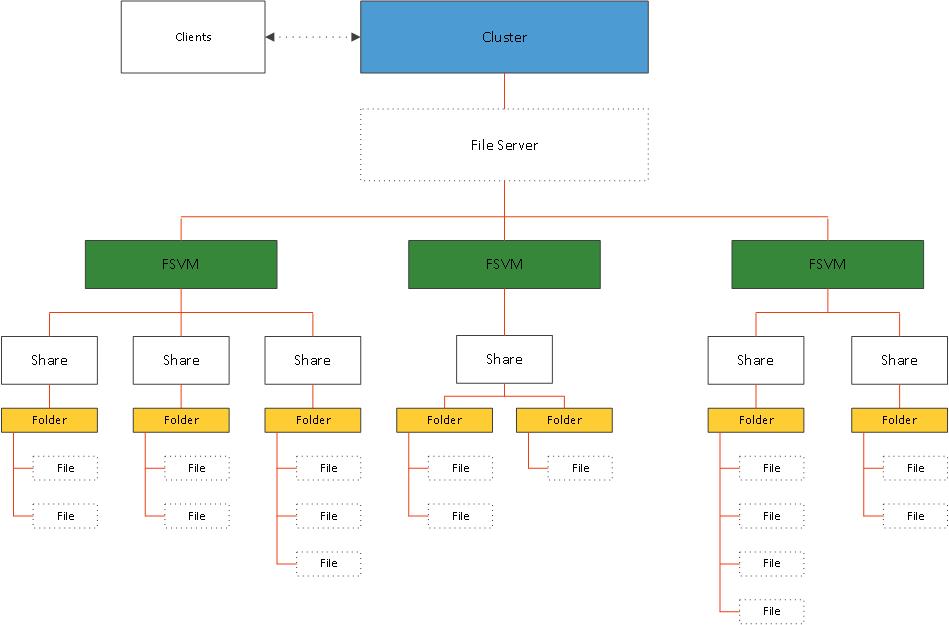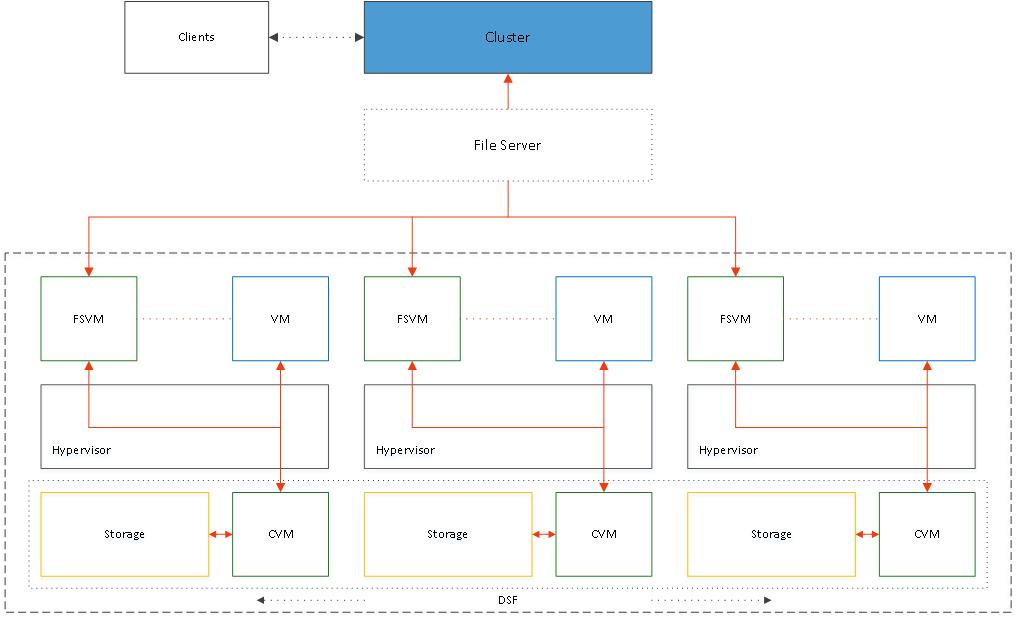It is hard to come up with a topic to write about when it comes to the Nutanix product portfolio. For one, there is just too much to choose from. I mean, just have a look at the list of features they introduced with the release of AOS 5.0 and it will get your head spinning. Secondly, their own documentation is just outstanding. Their product fact-sheets, website and of course Steven Poitras’s The Nutanix Bible, which contains just about everything you might want to about Nutanix and the bits and bytes involved. Never mind the endless list of community (Blog) rock stars working for or surrounding the company.
New in AOS 5.0
One of the features that went GA with AOS 5.0 is the Acropolis File Services (AFS) service with support for ESXi and AHV (it was in tech preview in version 4.6 / 4.7). A true software-defined scale-out storage solution designed to address a wide range of use cases, including Windows home directories, user profiles and department shares — architected and designed with the same robustness, scalability and availability as the Nutanix platform itself.
Since it is a core component of the Nutanix Enterprise Cloud Platform it can be deployed on an existing Nutanix cluster or a stand-alone cluster eliminating the need for a separate NAS appliance or other silo of some sort. Because of this approach AFS also inherits all of the rich storage features that Nutanix is well-known for like intelligent data tiering, deduplication, erasure coding, compression, and distributed self-healing.
All in one place
If you are a Nutanix customer, or are thinking about taking the leap, you basically don’t need anything else. And let’s face it, file servers are a must have in all IT infrastructures. Acropolis File Services is enabled and set up within minutes using PRISM, while at the same time Microsoft Active Directory and DNS are also fully integrated and supported.
Meaning you will be able to leverage the authentication and authorization capabilities of AD and that all share permissions, user and group management is done from a traditional Windows MMC. Next to that it supports SMB (version 2.1 at this time), user and share quota’s (hard and soft quota limits with configurable email warning limits), Access Based Enumeration, self service capabilities by leveraging Windows previous versions and automated disaster recovery capabilities to a secondary Nutanix cluster when needed/desired.
The components and services involved
An Acropolis File Services cluster is built up out of the following components and services, see the image above as well.
- A File Server — providing the high-level namespace. Each File Server will consist out of multiple File Server VM’s, or FSVM’s in short, three at a minimum (just like a Nutanix cluster — three physical nodes to start with and scale-out as needed) needing a minimum of 4 vCPU and 12GB of RAM to handle the client connections, including the highly scalable and available Acropolis Block Storage (ABS) for storing the actual data. This set up also ensures that the File Cluster can take full advantage of the built-in performance and scaling optimizations as mentioned earlier — highly available by design. The FSVM’s run as separate agent VM’s spread out over the underlying Acropolis platform. See image below.
- A share, or multiple in most cases — this is what your users will be connection in to for departmental files and folders, their home drive, user profiles and so on.
- Folders — as part of the abovementioned share, used for the actual file storage. Folders will be distributed over the File Server Virtual Machines (FSVM’s).
- The following AD objects will be created during file server creation: AD Computer Account for File Server, AD Service Principal, Name (SPN) for File Server and each FSVM, DNS entry for File Server pointing to all FSVM(s), DNS entry for each FSVM — AD Admin account will be needed (or similar privileges).
- High Availability — From the ‘Bible’: Each FSVM leverages the Acropolis Volumes API for its data storage which is accessed via in-guest iSCSI. This allows any FSVM to connect to any iSCSI target in the event of a FSVM outage. To provide for path availability DM-MPIO is leveraged within the FSVM which will have the active path set to the local CVM by default. In the event where the local CVM becomes unavailable (e.g. active path down), DM-MPIO will activate one of the failover paths to a remote CVM which will then takeover IO. When the local CVM comes back and is healthy it will be marked as the active path to provide for local IO.
This overview shows the File Server Virtual Machines on a standard Nutanix 3 node cluster:
Takeaways
- Acropolis File Services is available as of AOS 5.0, which stand for Acropolis Operating System, by the way and upwards and it currently supports VMware’s ESXi and the Acropolis Hypervisor.
- It is a core component of the Nutanix Enterprise Cloud Platform and as such it eliminates the need for a separate NAS or any other form of silo, if and when applicable. As an added bonus you might save some on Windows licensing as well, depending on you file server setup that is.
- Active Directory as well as DNS are supported, including all authorization and authentication capabilities they offer.
- For now only SMB version 2.1 is supported — more is on the roadmap.
- AFS supports and can make use of all the rich storage features that Nutanix is well-known for like intelligent data tiering, deduplication, erasure coding, compression, and distributed self-healing.
Thank you for reading.











One response to “New in AOS 5.0: Nutanix Acropolis File Services”
[…] Read the entire article here, New in AOS 5.0: Nutanix Acropolis File Services […]